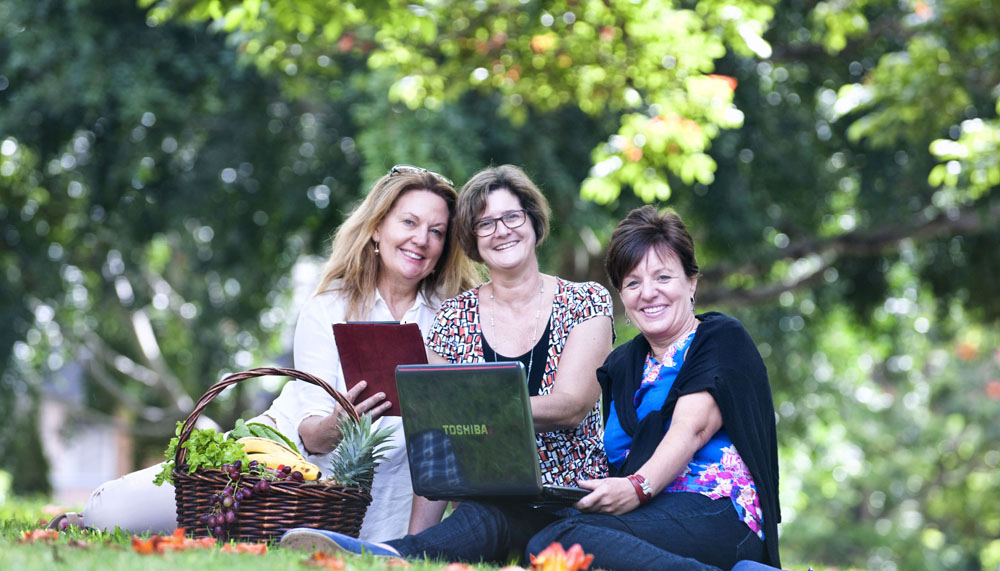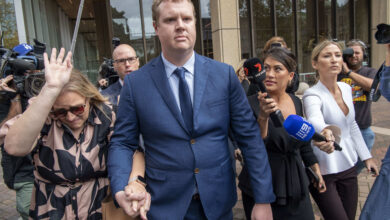An app a day

Internet and smartphone technology is helping women who are cancer survivors maintain wellbeing. By Aileen Macalintal
The Queensland University of Technology leads the Women’s Wellness After Cancer Program, which teaches self-management via internet and smartphone technology.
WWACP is one of the eleven projects that the National Health and Medical Research Institute funded with $7.9 million through its Partnerships for Better Health.
Lead investigator Professor Debra Anderson from QUT said WWACP is “a 12-week program of structured health promotion incorporating physical activity, monitoring of diet, smoking, alcohol intake, sleep and psycho-educational strategies designed to decrease risk factors associated with health behaviours in women”.
Anderson said the program includes messages on physical activity and healthy eating, goal setting planned with a registered nurse, and coaching. It also features motivational interviewing, feedback, relapse prevention and self-monitoring.
Anderson said they chose women survivors for the program because women live longer with certain cancers. “For example, 90 per cent of women diagnosed with breast cancer will survive at least five years; 80 per cent are still alive 20 years later,” she said.
She also noted how access is important for women who are at a geographical disadvantage.
“Government health services do not currently offer post-treatment support apart from selective surveillance-type follow up,” she said, “and while not-for-profit organisations provide valuable psychological support for women, once treated for breast cancer, they rarely provide structured health promotion programs.”
She added many urban and rural women have no face-to-face programs due to constraints of cost, time, and distance.
The program maximises the use of technology as the Internet and smartphones “enhance health outcomes for those at significant risk of chronic disease through an accessible, relatively simple, flexible, sustainable intervention available irrespective of place of residence,” she said.
Put simply, the program’s tools are mobile gadget apps, a video conference platform, and an interactive website, which incorporates a weekly exercise planner and schedule, a community message board, and modules to monitor goals versus actual performance.
As for the mobile device app, Anderson said, “the app monitors and provides continuous feedback on energy, water, macro- and micronutrient intake and body weight.
“Data entered into the app or website will be stored on a central database and presented in ‘keeping on track’ tables and motivational charts which track participant’s progress against goals.”
Consultations, on the other hand, will be done through the virtual consultation platform. This features videoconferencing with a nurse trained in the intervention and based at the Princess Alexandria Hospital Brisbane, QLD.
“This platform will enable remote access to advice and support from healthcare professionals in the participant’s primary residence, reducing the need for travel which can be a key barrier to adherence,” she said.
To highlight the significance of technology in health promotion, Anderson said technology “provides easy access to decentralised, technology-enhanced healthy lifestyle intervention that best suits needs”.
Janine Porter-Steele is the clinical nurse manager at partner organisation, Wesley Hospital Kim Walters Choices Program.
Porter-Steele said the project would drive an innovative eHealth behavioural intervention to improve the quality of life and reduce chronic disease risk among women treated for cancer.
“The WWACP is extremely promising, building on a strong research base and already established partnerships,” said Porter-Steele.
“University partners will contribute critical expertise and research capacity in the development of behavioural interventions, health service design and evaluation, health professional education, eHealth interventions and cost effectiveness evaluation,” she said.
She said clinical partners would provide patient recruitment sites in QLD, WA, NSW and VIC. They will allocate experienced cancer care nurses to take on screening and recruitment of patients who are approaching the conclusion of their treatment.
“Clinical partners will also play a key role in design and optimisation of the WWACP, through their representatives in the CI and AI team and Stakeholder Advisory Committee,” she said.
She added that partners would in the near future translate the program into routine clinical practice. “Each health service partner has committed significant in-kind resources, which will be critical to enable the conduct of a clinical trial of this scale.
“Each of these hospitals hosts major cancer treatment centres and their partnership is evidence of their commitment to improving post-treatment support services for cancer patients.”
She said another partner would provide access to its extensive breast cancer patient database and member network to support recruitment into the trial.
In cooperation with CanSpeak QLD, partners will also help to represent the perspectives of patients throughout all stages of the project and “provide an important pathway for communication with the patient community.”
Amanda McGuire, a registered nurse who currently works as the project manager for the Women’s Wellness Programs, was diagnosed and treated for breast cancer in 20251. “Following treatment, there was no support available to guide me how to get back to optimum health and wellness.
“The treatment finishes, and you are left feeling physically and emotionally exhausted. However, you have to get back to your life of work and family responsibilities and it is a very stressful period. I had no control over whether the cancer would recur, but what I could control was leading a healthy lifestyle with regular exercise, healthy eating and managing stress well.”
Having WWACP back then could have helped her cope better, she said.
She said access to a structured program such as the WWACP could provide clear, evidence-based information, support and structure during that difficult time after treatment.
Email: [email protected]





